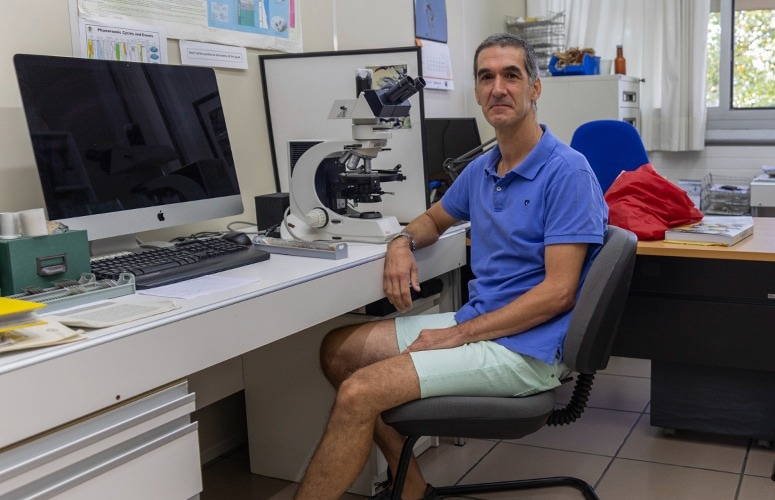Sediments in the Tremp-Graus basin (on the border between Lleida and Huesca) that date back to 56 million years ago have been investigated by the Department of Geology at the UPV/EHU.
 Palaeo-climate study may be of use in making predictions (Aitor Payros / UPV/EHU). Image Credit: Unai Zorriketa. UPV/EHU
Palaeo-climate study may be of use in making predictions (Aitor Payros / UPV/EHU). Image Credit: Unai Zorriketa. UPV/EHU
According to the study, there were three distinct stages to the global warming phenomenon at the time, each of which had a distinctive pattern of precipitation. The study’s data can be used to modify mathematical models that predict the consequences of the current climate change.
The Palaeocene-Eocene Thermal Maximum, which is seen as an ancient parallel of today’s anthropogenic warming, resulted from significant carbon releases into the atmosphere and oceans 56 million years ago.
Although the origin or cause of the warming at that time was different, the process was very similar to today’s warming, so it is considered to be similar to today’s global warming. The climate is known to have warmed, but other alterations besides warming may occur with climate change. In particular, we wanted to analyze how the hydro-climatic conditions in terms of rainfall changed at that time.
Aitor Payros, Professor, Department of Geology, University of the Basque Country
The Department of Geology at the UPV/EHU has studied the mid-latitude alluvial and hydro-climatic changes that occurred during the Palaeocene-Eocene Thermal Maximum in the Tremp-Graus basin (on the border between Lleida and Huesca).
They concluded that what occurred at that time had some similarities to what is currently occurring in the southeast of the Iberian Peninsula. They acheived this by gathering historical information from the area and finding geographic and hydro-climatic connections.
Payros added, “We saw that global warming altered the seasonal distribution of precipitation and that it also altered across several phases. At first, rainfall was concentrated in a few months around autumn; later, it became more evenly distributed throughout the year. The last phase, however, tended to be drier.”
“We can’t simply say that global warming is causing temperatures to rise or making rainfall heavier. Things are not that straightforward. Changes do occur, but they are not sustained over the entire period of global warming. Within global warming, there may be several phases,” stated Payros.
Looking to the Past to Predict the Future
Payros further added, “We observed that at the onset of that global warming episode there was an increase in seasonal contrasts with respect to precipitation. In other words, precipitation was concentrated around the autumn (with frequent storms and major floods) and during the remaining months there were periods of drought.”
He stated, “And that is precisely what has been happening over the last few decades, and during the last century, in the southeast of the Iberian Peninsula: heavy rainfall is becoming more frequent around autumn and late summer, which was not the case 100 or 200 years ago.”
The researcher emphasized that forecasting future events in the southeast of the Iberian Peninsula is impossible.
He added, “But if we assume that the Earth responds in a similar way to the same or similar phenomena, we could surmise that the future annual distribution of precipitation may be more homogeneous in the southeast of the peninsula or in other regions with a similar climate.”
Payros highlights the possible benefit of researching palaeoclimates.
He stated, “We can see what happened millions of years ago. And if what happened is repeated over and over again, in other words, if the Earth always responds in the same way to certain phenomena, we can assume that it will continue to function in the same way in the future.”
It is possible to make future predictions using this form of study.
Payros concluded, “When the computer or mathematical models used to predict climate are able to reproduce the phenomena that took place during past global warming periods, then they will be able to predict the changes that will occur in the future. Such computer and mathematical models may tally with our data.”
Journal Reference:
Payros, A., et al. (2022) Mid-latitude alluvial and hydroclimatic changes during the Paleocene–Eocene Thermal Maximum as recorded in the Tremp-Graus Basin, Spain. Sedimentary Geology. doi:10.1016/j.sedgeo.2022.106155.